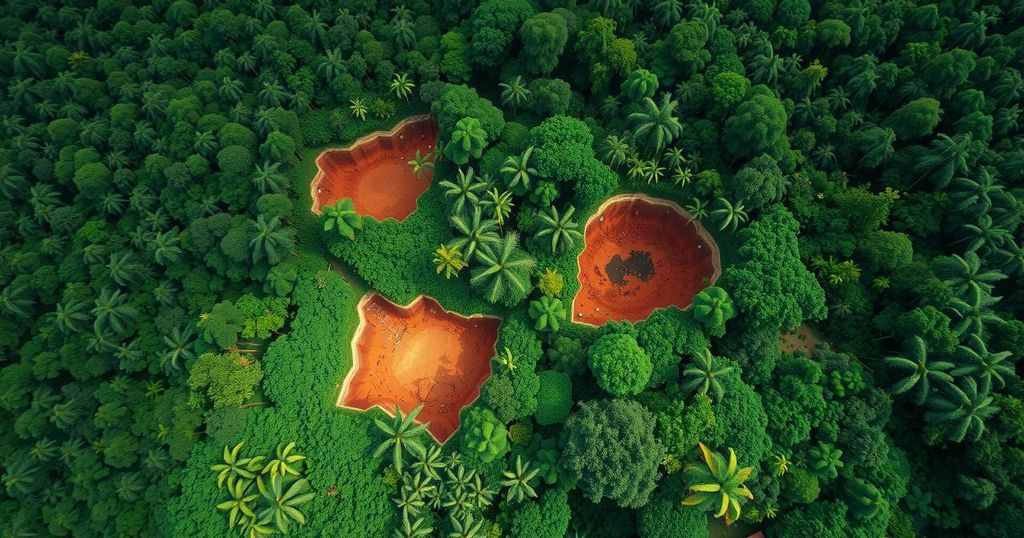Gold mining in Peru’s Amazon rainforest, particularly in the Madre de Dios region, is leading to significant peatland destruction, which exacerbates climate change. Approximately 70 percent of artisanal mining occurs there, with employment increasing due to economic challenges. This illegal mining contributes to deforestation and releases large amounts of carbon into the atmosphere, with projections indicating a potential rise in peatland mining by 2027.
Recent studies indicate that gold mining in Peru’s Amazon rainforest is exacerbating environmental issues, including the destruction of peatlands. About 70 percent of the country’s artisanal gold production occurs in the Madre de Dios region, a major source of employment for approximately 30,000 people, driven by ongoing economic instability since the 2008 financial crisis.
The mining activity, primarily illegal, has been identified as a major contributor to deforestation and has recently been linked to significant peatland destruction. Peatlands, which are crucial carbon reservoirs, sequester seven times more carbon than the surrounding trees and are being significantly affected by gold extraction activities, releasing large amounts of carbon into the atmosphere and contributing to climate change.
Analysis of over 35 years of satellite data reveals that approximately 550 hectares of peatland have been lost, with an alarming 0.2 to 0.7 million tons of carbon emitted into the atmosphere. Notably, over half of this destruction has occurred in just the last two years. Currently, only 9 percent of mining takes place in peatlands, but projections suggest this could rise to 25 percent by 2027, potentially releasing up to 14.5 million tons of carbon.
Dr. John Householder from the Karlsruhe Institute of Technology expressed concerns over the rapid expansion of mining into peatland areas, emphasizing the lack of law enforcement to halt this trend. He warned that this could lead to irreversible damage, necessitating urgent measures to protect these delicate ecosystems.
Furthermore, the extent of gold extracted from the peatlands and its subsequent entry into global markets remains largely untraceable due to the illicit and unregulated nature of mining activities. Once mined, the gold is swiftly transferred through local agents, obscuring its origins before reaching processing plants and ultimately the global market. This complicates efforts to assess the environmental impact of this mining.
Despite being one of the world’s top gold producers, Peru faces challenges with illegal mining practices contributing to significant environmental degradation. The new research highlights the urgent need for awareness and protective measures regarding peatland ecosystems and the impacts of gold mining operations. The findings are published in the journal Environmental Research Letters.
In conclusion, the findings underscore the urgent need to address the detrimental effects of gold mining in Peru’s Amazon rainforest, particularly regarding the loss of invaluable peatlands which play a critical role in carbon sequestration. The rapid expansion of mining activities into these fragile ecosystems poses an escalation in carbon emissions that could have lasting impacts on climate change. Enforcement of regulations and protective measures are essential to preserve these vital environmental resources.
Original Source: www.iflscience.com




